16 Drought Hardy Plants - Low-Maintenance Garden
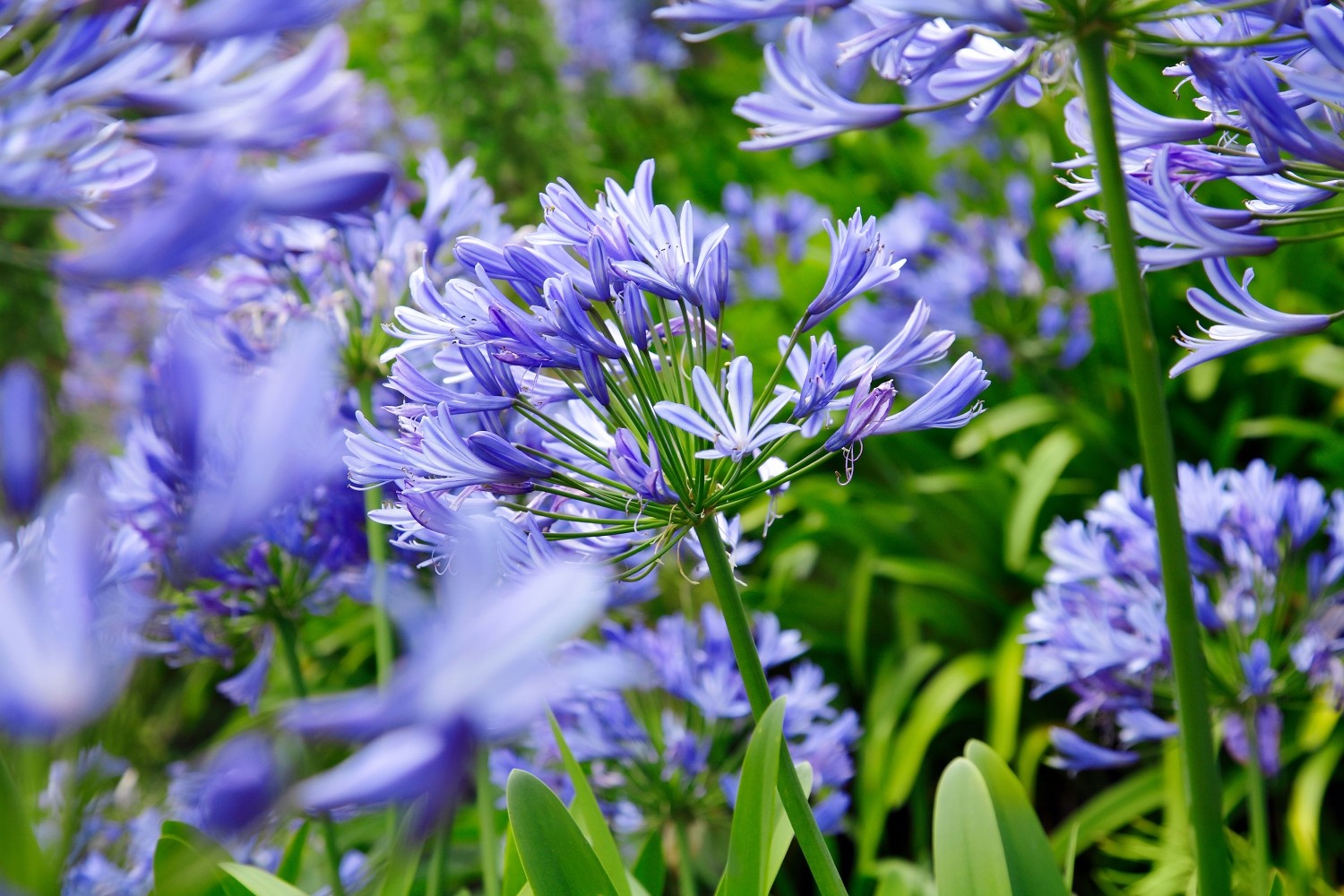
Choosing drought hardy plants for your garden ensures a lush, low-maintenance setup that thrives even under water restrictions. These plants are ideal for water-conscious gardeners and arid climates, but they maintain their vigour without frequent watering.
Drought tolerant plants support sustainable gardening by adapting to poor soil conditions and thriving in full sun. They are a practical choice for their ability to withstand dry conditions and their beauty and variety.
Incorporating drought-tolerant ground covers and plants with fleshy leaves helps reduce moisture loss and keeps your garden vibrant from late spring to mid-summer.
Whether establishing new garden beds or enhancing existing ones, selecting the best drought tolerant plants turns any outdoor space into a resilient and inviting retreat.
Factors to Consider When Choosing the Perfect Plants
Selecting the right plants for your drought tolerant garden involves more than just picking species that survive on minimal water. Consider these factors to ensure your garden is both beautiful and sustainable:
- Sunlight Exposure: Assess how much sun your garden receives daily. Drought tolerant plants typically flourish in full sun, but some varieties need a shady spot to thrive.
- Water Availability: Although these plants are drought hardy, initial watering is crucial to establish roots. Plan your garden layout considering the availability and restrictions of water in your area.
- Soil Type: Opt for well-draining soil to prevent waterlogging, which is detrimental to drought-resistant plants. Amending the soil with organic matter can improve its texture and fertility.
- Local Climate: Choose plants that can cope well with local weather conditions. In Queensland, look for species that can handle dry spells and the occasional heavy rain.
- Plant Hardiness: Ensure the plants are suited for your hardiness zone. Hardy plants will survive year-round with minimal care.
Essential Pre-Planting Tips for Drought-Resistant Plants
Maximising the success of your drought-resistant garden starts well before the planting begins. Follow these essential tips to ensure your plants not only survive but thrive:
- Amend Your Soil: Mix in organic matter to your garden's foundation. This improves water retention and drainage, key for drought tolerant plants in dry conditions.
- Establish Watering Practices: Even drought-hardy plants need consistent watering to establish their root systems. Develop a watering schedule that provides moisture without overdoing it, especially during growth stages and dry spells.
- Choose the Right Location: Plant your drought tolerant species in areas that receive full sun, as most such plants thrive under direct sunlight. Evaluate your landscape to find spots that meet the sunlight needs of each plant type.
- Consider Mulching: Apply a layer of living mulch around your plants. This helps store water, reduces water loss, and keeps roots cool.
- Monitor Plant Health: Monitor your plants as they adapt to their new environment. Check for signs of stress, such as wilting or discolouration, and adjust care as needed.
Top Drought Tolerant Plants
Selecting the right plants is crucial for creating a garden that is both beautiful and easy to maintain. Some top choices are known for their drought resistance and low maintenance needs.
Flowers and Ornamentals
Drought-tolerant flowers and ornamentals add colour and interest to your garden without the high water demands. These plants offer a variety of textures, colours, and forms, ensuring your outdoor spaces remain vibrant and attractive even in dry conditions.
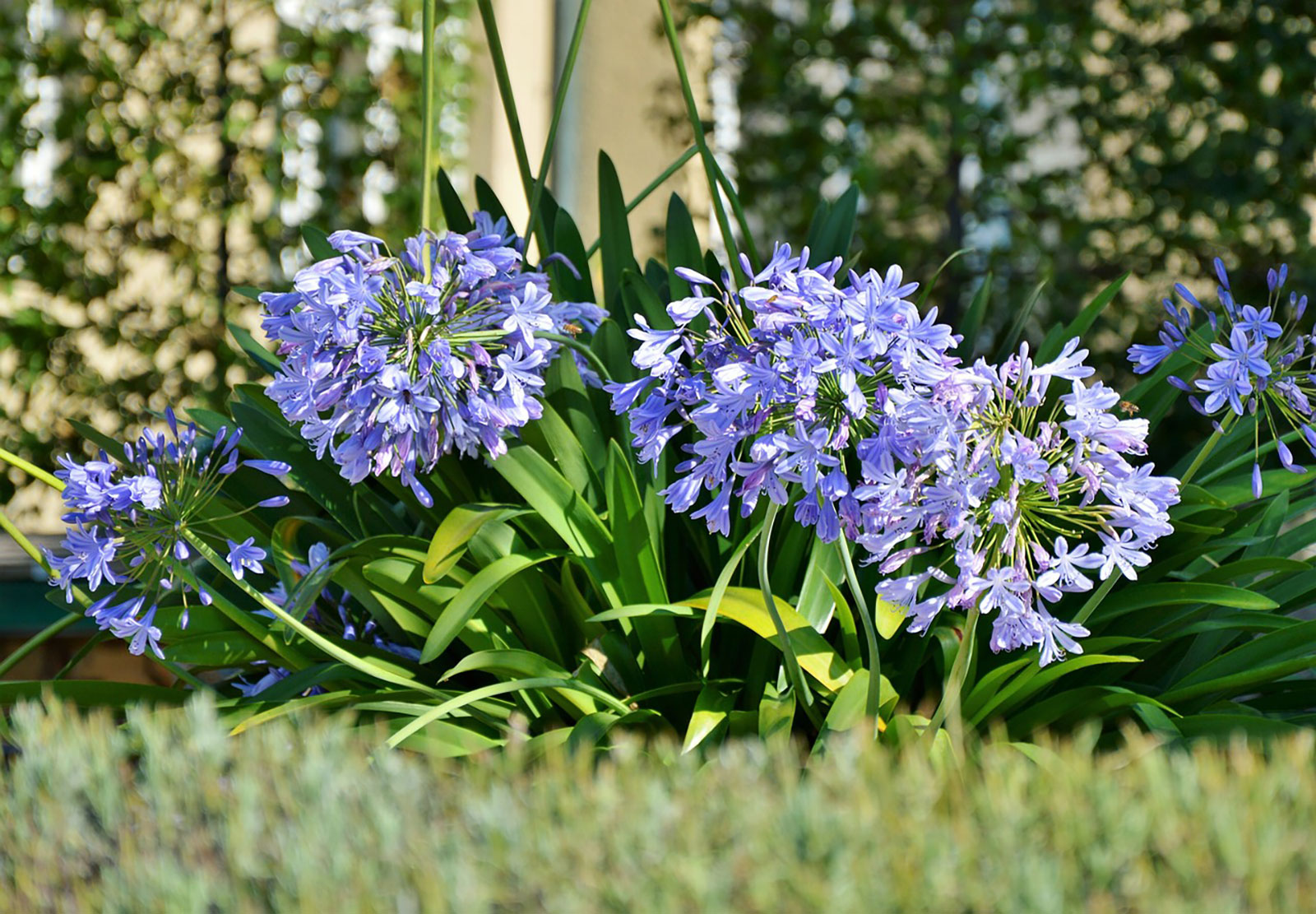
1. Agapanthus
Scientific name: Agapanthus praecox
Climate: Warm temperate to subtropical
Agapanthus stands out with its striking blooms and resilience. Often celebrated for its beautiful clusters of blue or purple flowers, this plant is a favourite in gardens facing harsh drought conditions.
Agapanthus thrives in full sun and requires well-drained soil, making it ideal for areas with water restrictions. Its ability to save water while displaying vibrant flowers throughout spring and summer exemplifies its status as one of the best plants for low-maintenance gardens.

2. Yucca
Scientific name: Yucca filamentosa
Climate: Warm temperate to arid
Yucca plants are known for their exceptional drought resistance and ability to thrive without frequent watering for months. They perform well in coastal and seaside gardens, showcasing their adaptability to various outdoor spaces.
Their tropical and exotic appearance adds a modern touch to any landscape. Yuccas serve many functions, from enhancing courtyards as centrepiece plants to acting as stylish, low-maintenance screens.

3. Westringia
Scientific name: Westringia fruticosa
Climate: Mediterranean to coastal
Westringia, also known as native rosemary, is a robust shrub that exemplifies the qualities of drought hardy plants. It flourishes in full sun and can thrive even in soil that lacks nutrients. Ideal for gardens that receive a lot of sunlight, Westringia needs very little water once established, making it a perfect choice for low-maintenance landscapes.
With its grey-green foliage and small flowers that bloom in spring and sporadically throughout the year, Westringia adds a subtle charm to any garden setting. The flowers come in shades of white, pink, and occasionally blue, providing a soft contrast to its hardy leaves.
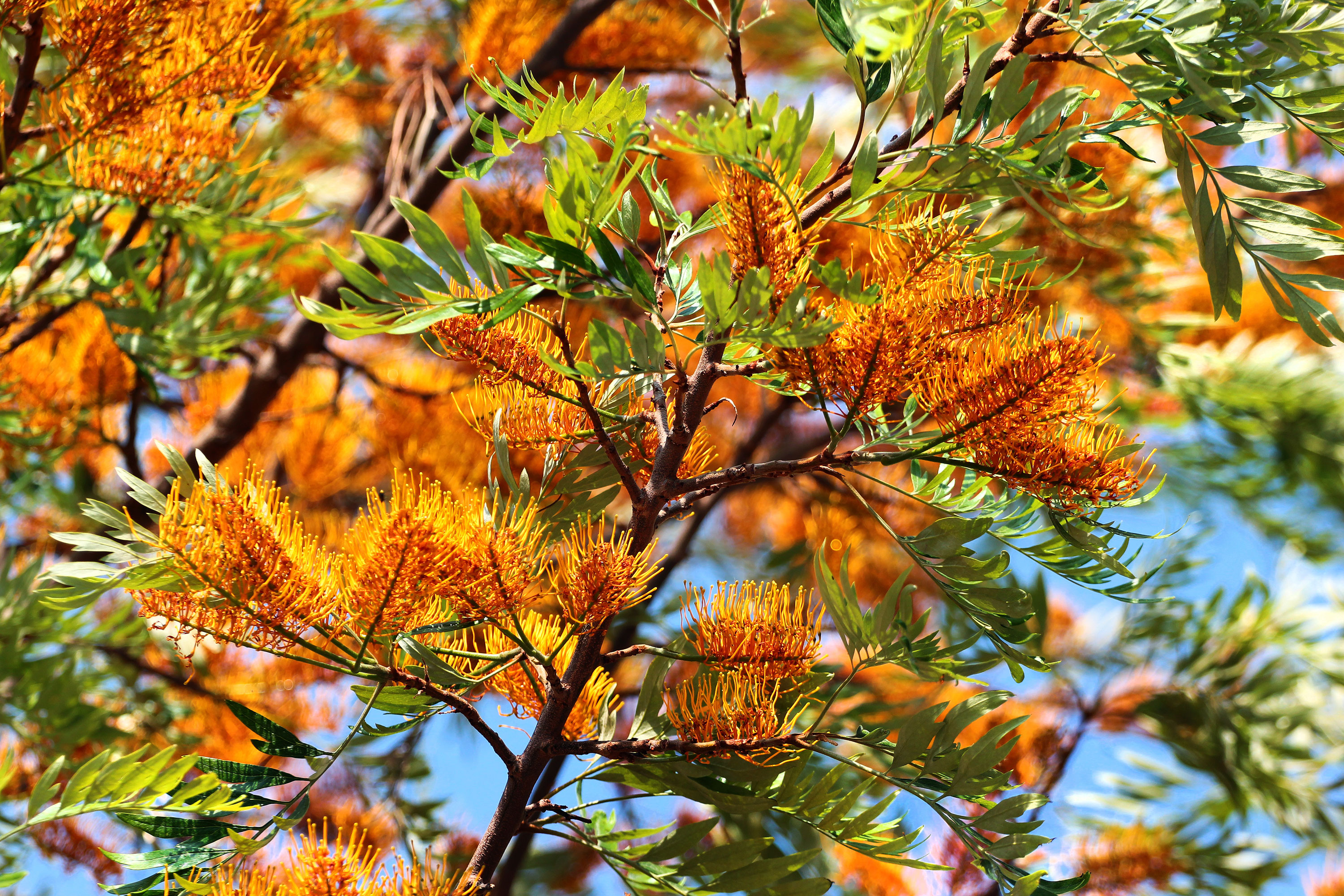
4. Grevillea
Scientific name: Grevillea robusta
Climate: Subtropical to temperate
Grevillea stands out among drought-hardy plants, known for its spectacular foliage and captivating flowers. Ideal for gardens seeking aesthetic appeal and resilience, Grevillea thrives in full sun and adapts well to various soil types, requiring little water once established.
Its rapid growth and ability to cope with minimal watering make it a top choice for low-maintenance gardens. Gardeners value Grevillea for its intricate flowers, which bloom in shades of pink, red, orange, and yellow, typically peaking in spring.
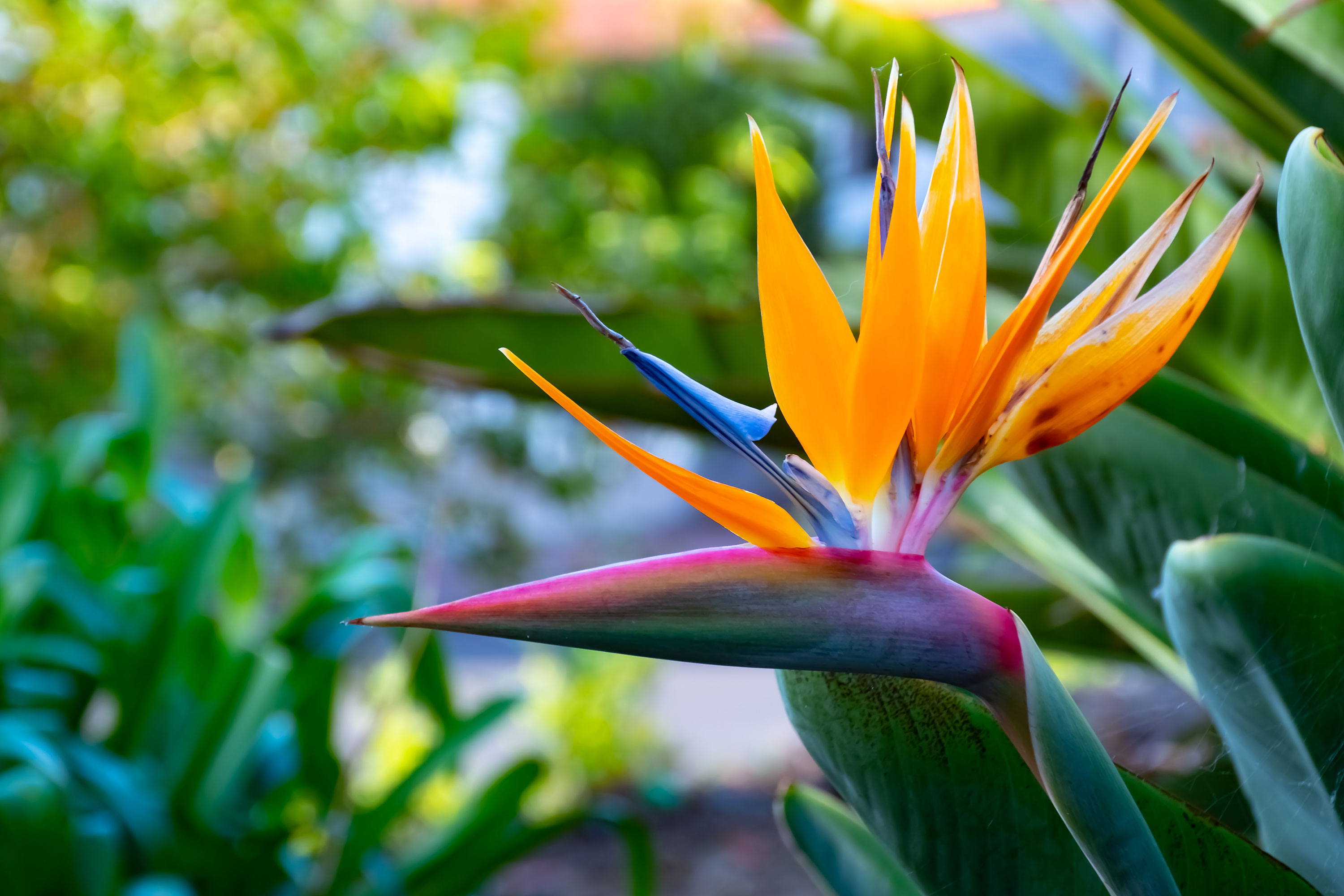
5. Bird of Paradise
Scientific name: Strelitzia reginae
Climate: Subtropical
The Bird of Paradise plant is undeniably a stunning addition to any garden. This exotic plant creates the feeling of a lush and vibrant garden with very little maintenance required.
Its unique, crane-like flowers make it a captivating focal point in any outdoor space. To thrive, the Bird of Paradise must be placed in a sunny spot with well-drained soil. Despite its tropical look, this plant is surprisingly hardy and only requires moderate watering once it has established itself.

6. Bougainvillea
Scientific name: Bougainvillea glabra
Climate: Cold and warm temperate, subtropical and tropical
Bougainvillea is your go-to for a splash of enduring colour. This plant's ability to flourish with minimal care makes it a favourite among those looking to brighten their gardens without the constant upkeep.
Bougainvillea's vigorous, climbing nature lets it quickly cover fences, walls, and trellises, offering beauty and privacy. It's suited to a wide range of Australian climates, from warm temperate to tropical and subtropical regions, thriving under full sun and in well-drained soil.
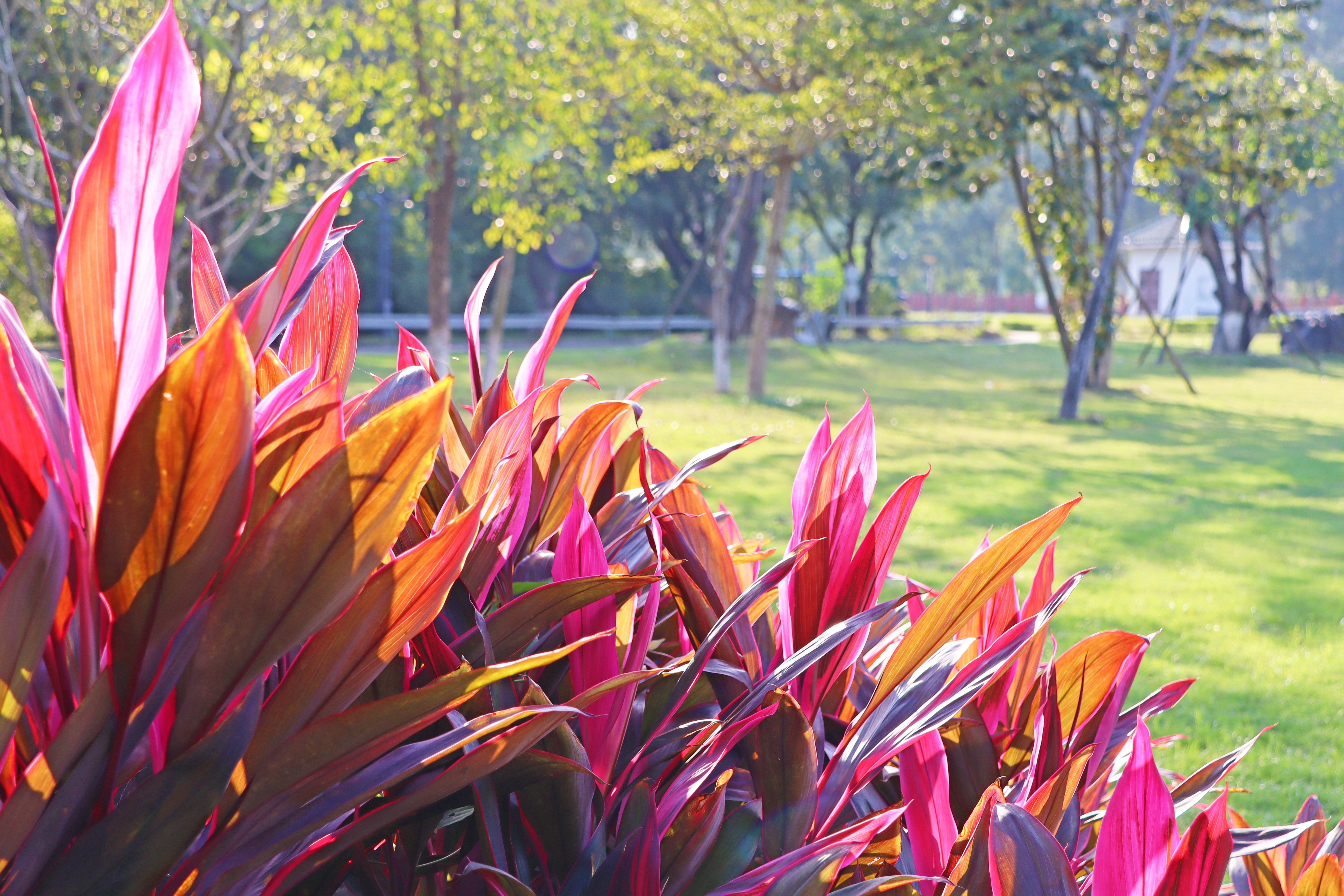
7. Cordyline
Scientific name: Cordyline australis
Climate: All except arid and semi-arid
Cordyline adds a striking architectural element to any garden with its sharp, spiky foliage in various colours, from vibrant greens to deep purples. Cordyline thrives in full sun and handles dry conditions well once established.
It is ideal for gardeners seeking drama and style with minimal maintenance. This plant suits almost any garden style, from modern minimalist to tropical paradises.

8. Sedum
Scientific name: Sedum acre
Climate: Cold and warm temperate, subtropical and tropical
Sedum, also known as stonecrop, features fleshy leaves and star-shaped flowers. This plant thrives in full sun and poor soil conditions, making it perfect for drought-prone areas.
Sedum requires minimal watering once established and provides a beautiful ground cover with its low-growing habit and colourful blooms, adding texture and interest to any garden.
Herbs
Cultivating herbs that thrive under low-water conditions saves water and enhances your garden with flavours and fragrances. These herbs grow well in full sun and adapt quickly to less-than-ideal soil conditions, making them perfect for a drought-tolerant garden in Queensland.

9. Thyme
Scientific name: Thymus vulgaris
Climate: All climates and areas
Thyme is a durable, low-growing herb that excels in full sun and well-drained soil. Its fine texture and fragrant foliage serve as an excellent ground cover or border plant. Thyme's drought tolerance makes it a low-maintenance choice for any gardener looking to enhance their culinary garden with minimal water usage.

10. Bay Tree
Scientific name: Laurus nobilis
Climate: Warm temperate
Bay Trees flourish in well-drained soil and can handle full sun to partial shade. They grow slowly but become substantial, offering decorative greenery and aromatic leaves in various dishes. Once established, Bay Trees require little water, fitting well into the drought-tolerant landscape.

11. Rosemary
Scientific name: Salvia rosmarinus
Climate: Warm and cool temperate
Rosemary is renowned for its resilience and ability to thrive in dry conditions. It prefers full sun and doesn’t need much water once it’s established. This herb provides aromatic leaves for cooking and blooms with small, attractive flowers that support beneficial insects in the garden.
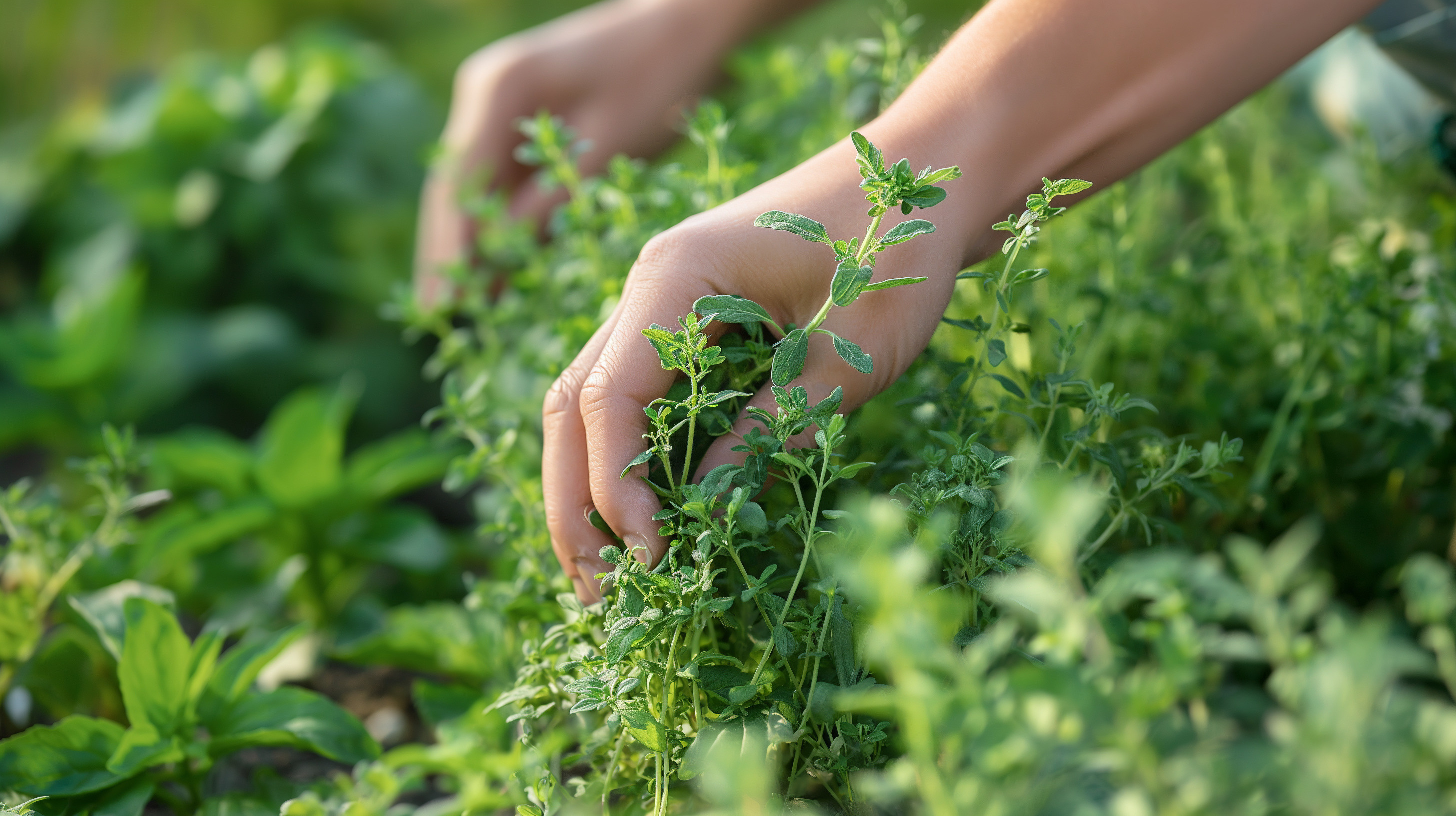
12. Oregano
Scientific name: Origanum vulgare
Climate: Cold and warm temperate, arid/semi-arid
Oregano is another robust herb that grows well in full sun and tolerates poor soil. It’s highly valued for its culinary uses and medicinal properties. Once established, oregano requires little watering, making it an excellent addition to any low-maintenance, drought-tolerant herb garden.
Its sprawling habit and small, pink flowers add aesthetic value while attracting various pollinators.

13. Sage
Scientific name: Salvia officinalis
Climate: Warm temperate, arid/semi-arid
Sage thrives in full sun and well-drained soil, making it an excellent choice for drought-tolerant gardens. Known for its aromatic leaves and woody stems, sage requires minimal watering once established.
This herb provides culinary benefits and adds silver-grey foliage to the garden, enhancing its visual appeal. Sage’s hardy nature and low maintenance needs make it a perfect addition to a water-wise garden.
Ground Cover
Ground cover plants are essential for low-maintenance gardens, providing dense foliage that helps retain soil moisture and suppress weeds.

14. Creeping Jenny
Scientific name: Lysimachia nummularia
Climate: Warm temperate
Creeping Jenny creates a lush, trailing carpet of bright green foliage. Once established, it adapts to various soil types and requires minimal watering, making it ideal for drought-tolerant gardens.

15. Mondo Grass
Scientific name: Ophiopogon japonicus
Climate: Cool to tropical
Mondo Grass is a superb choice for gardeners seeking robust ground cover that can withstand dry conditions. It forms dense mats of green foliage that thrive in shade or partial sun, making it ideal for filling gaps under larger plants or trees.
Once established, Mondo Grass requires little to no additional watering, aligning perfectly with a low-maintenance, drought-tolerant garden strategy. 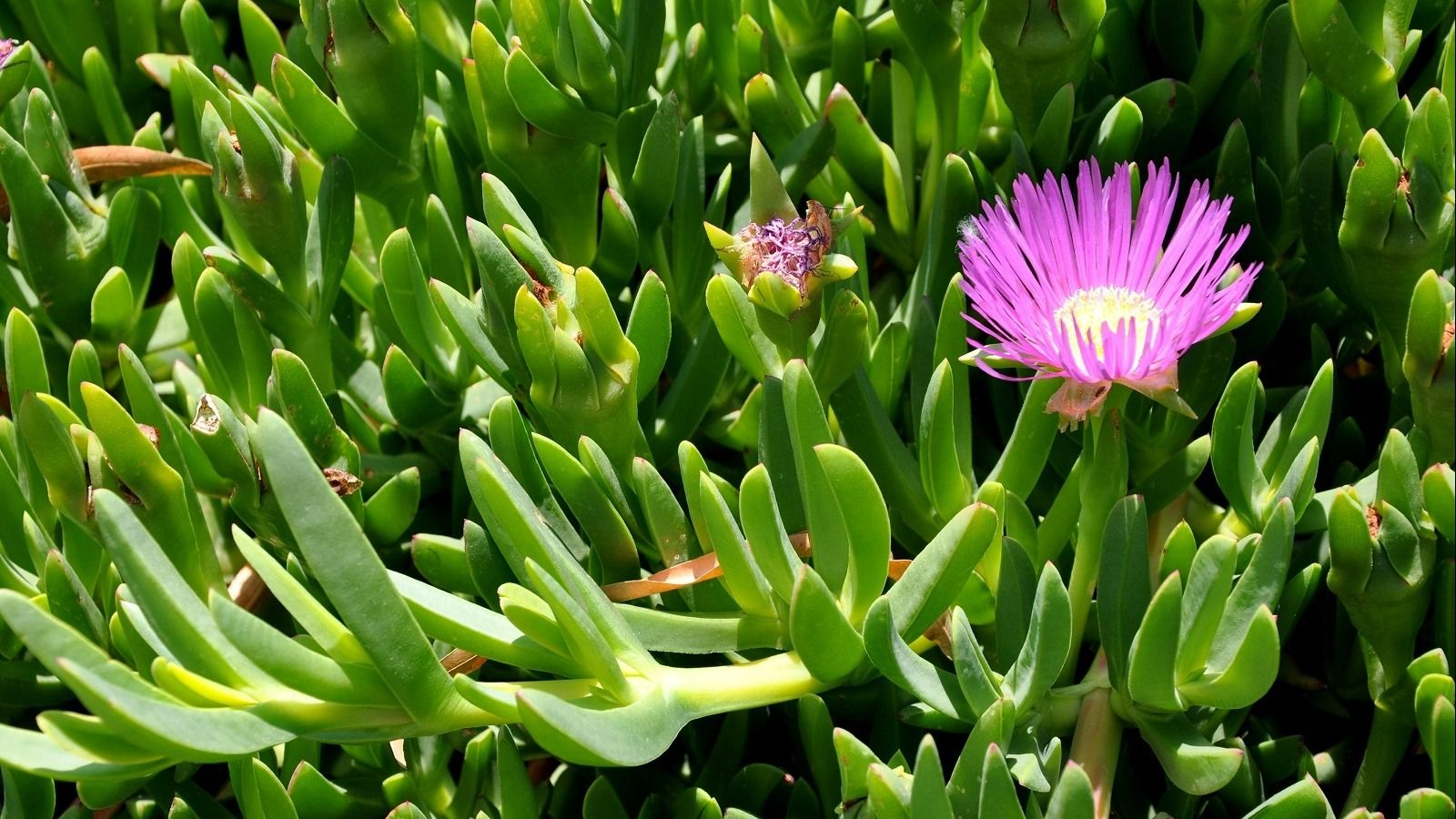
16. Round Baby Pigface
Scientific name: Disphyma crassifolium
Climate: Cold and warm temperate, arid/semi-arid
Round Baby Pigface stands out with its succulent leaves and vibrant, daisy-like flowers that bloom in shades of pink and yellow. This hardy plant excels in coastal gardens as it tolerates sandy soils and salt sprays very well.
Once established, it thrives in full sun, requiring minimal watering, making it a prime candidate for drought-hardy landscaping. The colourful blooms add beauty to the garden, attracting pollinators and enhancing biodiversity in outdoor spaces.
Bringing Your Low Maintenance Garden to Life
Choosing drought-hardy plants for your garden not only reduces maintenance and water usage but is also ideal for arid climates or water-restricted areas. These resilient plants, ranging from herbs to ornamentals and ground cover, thrive in dry conditions while adding diverse forms and vibrant colours to your garden.
Planting species suited to your local environment ensures your garden flourishes year-round. Embrace these low-maintenance, drought-tolerant plants to create a resilient and beautiful landscape that requires minimal intervention and conserves essential resources.
Transform your new home into a sanctuary that embodies your unique style. Our blog is full of inspiration to get you started. Check out our Landscaping Tips and Ideas for Your New Home for practical guidance to make your garden dreams a reality. Embrace sustainability with our Ways to Save Water at Home and discover how you can contribute to a greener planet while cutting down on water costs. And if Queensland is calling your name, find out why so many people are making it their home in our detailed guide.



